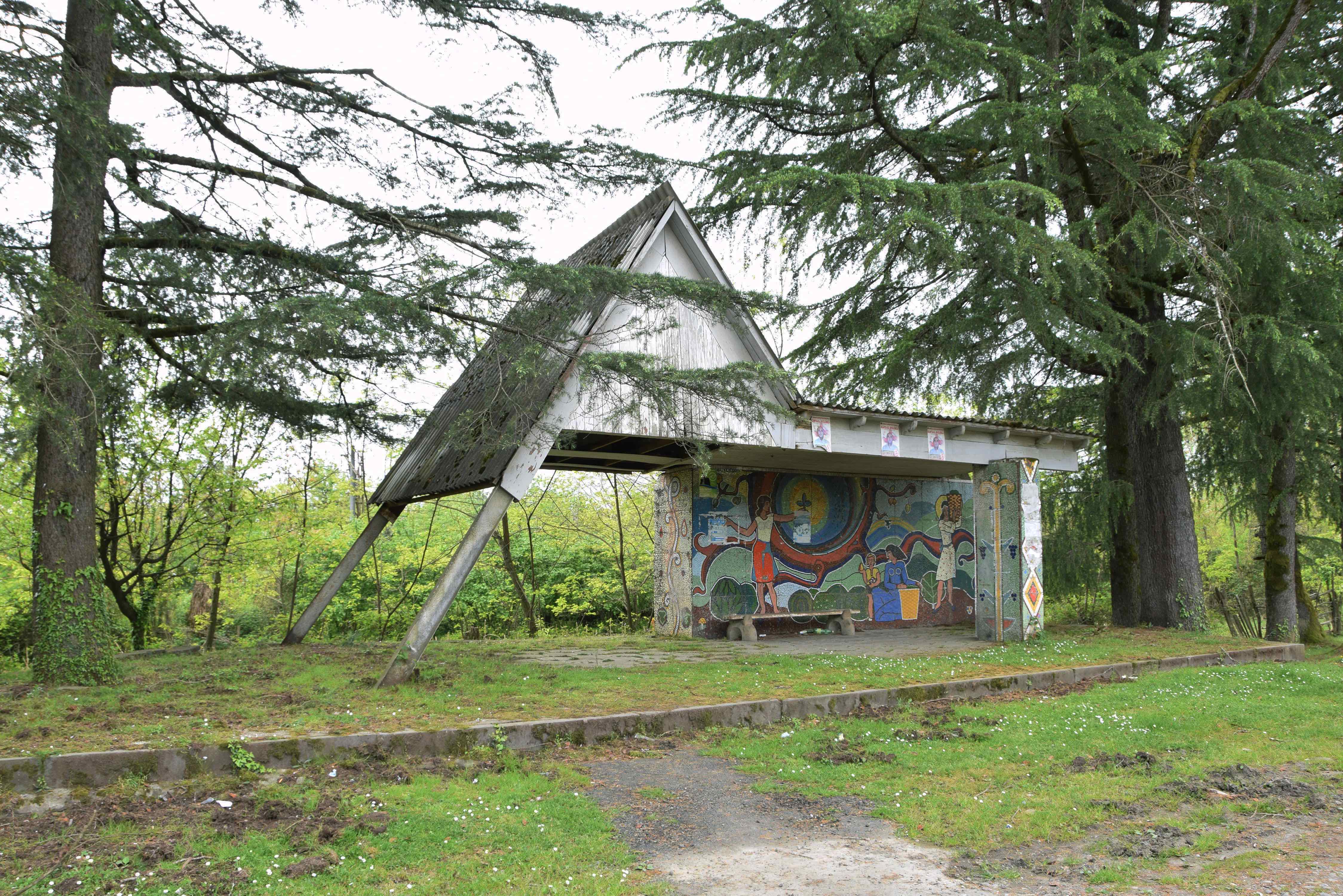An eerie tour of Georgia’s forgotten Soviet bus stops
- Text by Eva Clifford
- Photography by Nanuka Zaalishvili

Ever since she was a child, Nanuka Zaalishvili remembers seeing the strange shapes of Soviet bus stops along the roadsides of her native country, Georgia.
After growing up and qualifying as an architect, Zaalishvili came into photography unexpectedly when curiosity led her to return and document these forgotten constructions.
“For me, being an architect does not only mean sitting in a studio designing buildings or interiors,” she says. “It’s more about exploring the world around me and things that surround us in daily life.”

Natakhtari
Zaalishvili makes clear from the outset that she is not a photographer. “I had no idea how to use a camera, so the first pictures I took are not professional photos,” she says. Yet, a couple of years into the project she decided to make the pictures public, and they soon sparked an interest.
To find the bus stops, Zaalishvili scoured the country by car. Setting out from the Georgian capital Tbilisi, she drove with a different route in mind each time. While some were easy to find, others were set back a long distance from the main road – and, in some cases, new bus stops had been built in front of the original Soviet ones.
“Some of them are still functioning, but the majority are not,” explains Zaalishvili. “Nowadays, public transport will stop wherever you wave your hand, so nobody uses the bus stops.”

Kakhuri
In Soviet times it was a different story, because independent travel was discouraged and people relied heavily on public transport to get them from A to B.
As the pictures illustrate, no one bus stop is the same. Some are decorated with vibrant mosaics specific to that region – for example, grapes will signify a famous wine region – while others look like they’ve just landed from outer-space. Zaalishvili hopes that in documenting their diversity, others will also appreciate their value and see them as an important heritage of Soviet-era Georgian architecture.

Chalaubani

Goderdzi Pass

Rustavi

Manglisi

Borjomi

Patara Chailuri

Patara Kanda

Kobuleti
Zaalishvili’s book Soviet Bus Stops in Georgia is available now. Zaalishvili runs an architectural studio, as well as a site dedicated to all things architecture-related.
Zaalishvili was one of the exhibiting photographers at Kolga Tbilisi Photo Week, which takes place each May in the Georgian capital.
Enjoyed this article? Like Huck on Facebook or follow us on Twitter.
You might like

Largest-Ever Display of UK AIDS Memorial Quilt Opens at Tate Modern
Grief Made Visible — Comprising hundreds of panels made by lovers, friends and chosen family, the UK AIDS Memorial Quilt returns in full for the first time since 1994 – a testament to grief, friendship and the ongoing fight against HIV stigma.
Written by: Ella Glossop

In Medellín’s alleys and side streets, football’s founding spirit shines
Street Spirit — Granted two weeks of unfettered access, photographer Tom Ringsby captures the warmth and DIY essence of the Colombian city’s grassroots street football scene.
Written by: Isaac Muk

Remembering New York’s ’90s gay scene via its vibrant nightclub flyers
Getting In — After coming out in his 20s, David Kennerley became a fixture on the city’s queer scene, while pocketing invites that he picked up along the way. His latest book dives into his rich archive.
Written by: Miss Rosen

On Alexander Skarsgård’s trousers, The Rehearsal, and the importance of weirdos
Freaks and Finances — In the May edition of our monthly culture newsletter, columnist Emma Garland reflects on the Swedish actor’s Cannes look, Nathan Fielder’s wild ambition, and Jafaican.
Written by: Emma Garland

Why Katy Perry’s space flight was one giant flop for mankind
Galactic girlbossing — In a widely-panned, 11-minute trip to the edge of the earth’s atmosphere, the ‘Women’s World’ singer joined an all-female space crew in an expensive vanity advert for Jeff Bezos’ Blue Origin. Newsletter columnist Emma Garland explains its apocalypse indicating signs.
Written by: Emma Garland

We are all Mia Khalifa
How humour, therapy and community help Huck's latest cover star control her narrative.
Written by: Alya Mooro

